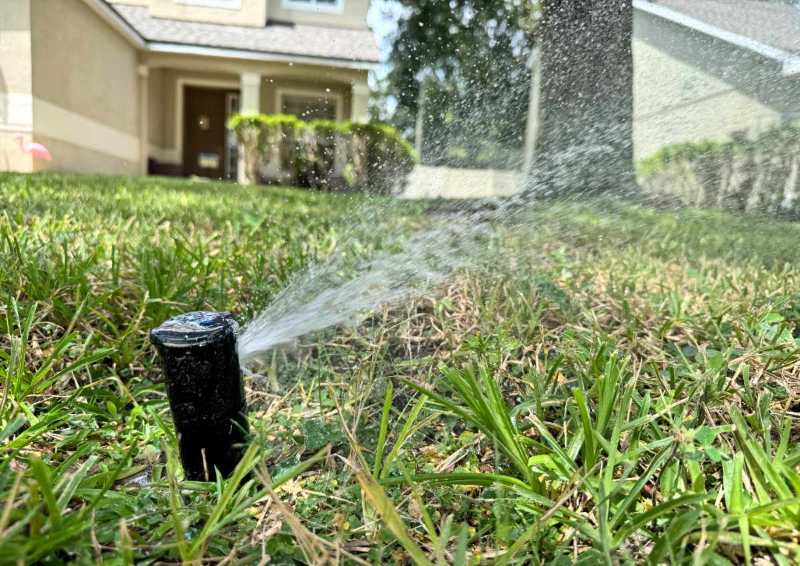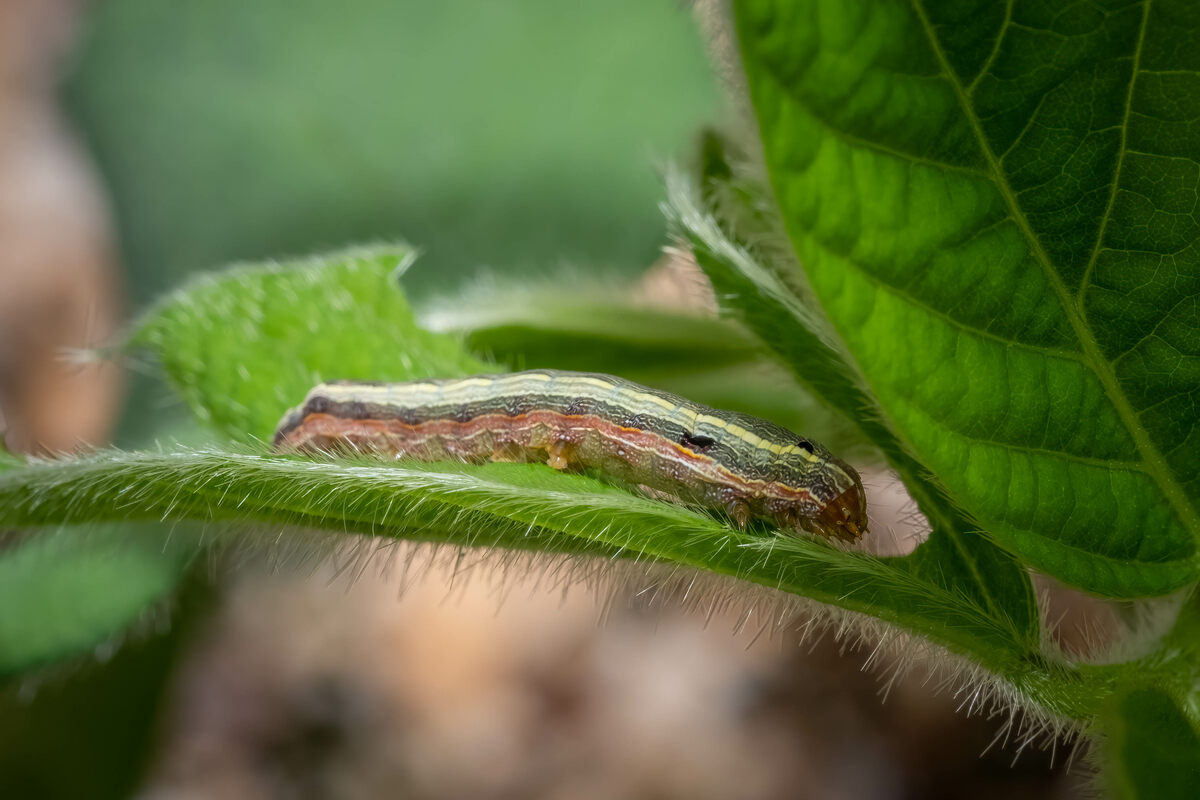
Yard work is almost a year-round exercise in balmy Tampa, so as fall ushers in milder weather and your weekend entertainment options multiply, don’t be lulled into thinking you’re off the hook. Make no mistake, fall is a critical time for your lawn; it needs you.
Between mid-September and mid-December, you should adjust your mowing schedule and height, keep your yard clean, water deeply, fertilize, and attack pests and weeds bent on taking over your lawn.
In this article, I’ll give you fall lawn care tips to keep your grass healthy, green, and ready to bounce back in spring.
Clean Up
Trees shed their leaves, twigs, and other debris in fall in Tampa just as surely as they do up North. And when they do, it can suffocate your grass. They block sunlight, trap moisture, and invite pests and lawn diseases.
“It is important to remove leaves from your Tampa yard because if they accumulate, they can block sunlight and trap moisture, creating a perfect environment for mold, pests, and lawn diseases,” says Sergio Beltran of Gio’s Lawn and Landscaping Service in Tampa. “In Tampa’s warm and humid climate, this can quickly damage the grass and plants underneath. Removing leaves regularly helps your lawn breathe, stay healthy, and look clean year-round.”
Rake at least once a month to keep your turf healthy, more if your yard is heavily treed. Bag the debris or add it to a compost pile.
Slow Your Mow

Our warm-season grasses in Florida grow well into the fall, but they do slow down as the temperature drops and you should mow less frequently. Mowing your lawn every 10 to 14 days is enough to keep it looking its best.
When you mow in the fall – particularly in late fall – leave the grass a little longer than usual. Longer grass insulates the roots from temperature fluctuations.
Rainfall also tends to drop off in the fall in Tampa, from an average of about 6 inches a month in the summer to about 1.5 inches a month in November and December. Longer grass develops deeper root systems and shades the soil, reducing water evaporation and helping your lawn stay greener with less irrigation
Here’s the recommended mowing height for popular grass types in Tampa:
| Type of Grass | Recommended Mowing Height |
| St. Augustinegrass | 3.5 to 4 inches |
| Zoysiagrass | 1 to 2 inches |
| Centipedegrass | 1 to 2 inches |
| Bermudagrass | 0.5 to 1.5 inches |
| Bahiagrass | 3 to 4 inches |
| Seashore paspalum | 1 to 2 inches |
Don’t cut more than one-third of your grass, as that can invite pests and diseases. I recommend leaving grass clippings on your turf as natural fertilizer.
See Related:
- What Is the One-Third Rule for Mowing Grass?
- How to Care for St. Augustinegrass
- Growing Zoysiagrass: Everything You Need to Know
- Centipedegrass Lawn Maintenance Guide
- Bermudagrass Guide: Types, Traits, and Care
- Bahiagrass Lawn Maintenance Guide
Water, But Not As Much

Your lawn doesn’t need as much water in the fall as in the summer: grass grows more slowly, the temperatures are cooler, the days are shorter, and there isn’t as much evaporation to rob your lawn of moisture.
Offsetting that is the fact that the fall here is much drier than the summer, so you may have to supplement Mother Nature with some irrigation.
So how much water does your lawn need? To look its best and stay its healthiest, make sure it gets half an inch to three quarters of an inch of water a week in the fall, or roughly half of what it gets in the summer. You can achieve that by watering each zone for about 15 minutes each, twice a week.
If you’re still not sure, wait until at least 30% of your grass shows signs of drought, like:
- Grass blades folding up
- Wilting
- Grass turning blue-gray
- Lingering footprints
See Related:
Know Tampa’s Watering Restrictions
Tampa has year-round watering restrictions instituted by the Southwest Florida Water Management District (SWFWMD). It’s important to follow them to avoid fines.
If you have an automatic irrigation system, you can set it to run only once a week, either before 8 a.m. or after 6 p.m. Here’s the schedule based on the last digit of your address:
- 0 or 1: Monday
- 2 or 3: Tuesday
- 4 or 5: Wednesday
- 6 or 7: Thursday
- 8 or 9, or no address: Friday
You can irrigate your lawn with up to ¾ inch of water per irrigation zone for no longer than one hour.
Even if you have a new lawn, watering between 8 a.m. and 6 p.m. is prohibited. The Tampa Bay area government recommends following the 30-day establishment schedule by the University of Florida’s Institute of Food and Agricultural Sciences (IFAS) for new turf.
These rules don’t apply if you hand-water or use micro-irrigation systems for landscapes like flowers, shrubs, and vines.
Check out the official City of Tampa Water Restrictions and Tampa Bay Watering Tips articles for more information.
Fertilize in October
Like all living things, grass needs nutrients, but any fertilizer applied after the grass goes dormant is a waste. Your grass won’t absorb much fertilizer, and even if it does and grows a bit, it’ll attract pests.
Early October is the right time to fertilize your lawn while it’s still actively growing. Go for a slow-release fertilizer with an equal or almost equal nitrogen-to-potassium ratio, as potassium strengthens roots and helps your lawn bounce back faster in the spring. You should also make sure the phosphorus percentage isn’t more than 2%.
Don’t apply fertilizer before October, as there’s a ban on using nitrogen fertilizer between June 1 and September 30. Check out the official article from The City of Tampa Fertilizer Ordinance for more information.
See Related:
- How to Fertilize Your Lawn
- How to Choose the Right Lawn Fertilizer
- How Often Should You Fertilize Your Lawn?
Be Proactive Against Pests

Pests are more active when it’s warm, but they can wreak havoc on your lawn any time of the year. Here are some pests to watch out for in Tampa:
- Chinch bugs
- Mole crickets
- Sod webworms
- Armyworms
I recommend dethatching your Tampa lawn at least once a year to deprive pests of the decaying material in which they thrive. Thatch is beneficial if it’s less than an inch thick, but anything more than that can become a breeding ground for pests and suffocate your lawn.
Early detection makes pests easier to control. Watch out for symptoms like thinning grass, brown patches, tunnels in the soil, or plants that pull up easily from the ground.
If they show up, there are a number of over-the-counter pesticides that work very well. Or, better yet, call a professional for help. Unchallenged, pests can quickly overwhelm a lawn and leave it severely damaged for several growing seasons.
Treat for Lawn Diseases

Lawn diseases are less aggressive as temperatures drop, but they are still a threat in the fall. Here are the most common fall diseases in Tampa:
- Brown patch fungus (November to May): You’ll see patches of grass about a foot in diameter turning yellow, reddish-brown to straw-color, and eventually brown. This disease is triggered by excessive soil humidity when the temperatures are under 80 degrees.
- Helminthosporium leaf spot (all year round): Activates in mild, wet weather and attacks all warm-season grasses, but is especially aggressive in Bermuda lawns. You can recognize it by the pinhead-sized, solid brown to purple-colored spots or expanded lesions with bleached centers that appear on grass blades.
- Pythium root rot (all year round): Spreads in lawns with high humidity, poor soil drainage, and overwatering. Infected grass has yellow, light green, or brown areas and is thin and wilted.
You can reduce the risk of diseases by following good lawn care practices year-round. They include mowing at the right height, fertilizing properly, and watering correctly.
If you’re dealing with any lawn disease, identify it and use fungicides for that specific disease. I recommend calling a professional for help, especially if the disease is severe, to prevent extensive damage.
Attack Weeds

Tampa lawns are a breeding ground for weeds, and that’s true even in the fall. Mowing your turf at the right height and watering it properly can prevent weeds to a great extent, but they can still show up.
Apply pre-emergent herbicides in mid-to-late September as soon as the soil temperature drops below 70 degrees Fahrenheit. If you didn’t apply them this season and weeds have already started to show up, you can pull them by hand if there are only a few. Apply post-emergent herbicides if there are too many weeds or if they are difficult to remove manually.
See Related:
- How to Prevent Weeds From Growing
- How to Apply Pre-Emergent Herbicide
- When to Apply Post-Emergent Herbicide
Overseed for Winter Color

Having a green lawn all year round isn’t possible, but if you want it, you can overseed with ryegrass. This cool-season grass establishes rapidly, grows fast, and dies when warm-season grass starts its season.
Overseed your lawn with ryegrass from October to November, when the daytime temperatures are consistently in the low to mid-70s.
Ryegrass is very easy to seed all over your backyard and front yard. All you need to do is:
- Mow the lawn slightly lower to give the new shoots space to grow.
- Rake the fallen leaves to make sure grass seeds are reaching the soil.
- Spread the ryegrass seeds.
- Water the lawn.
See Related:
Keep Your Tampa Lawn Healthy All-Year Round

Your beautiful Tampa lawn is winding down its growth in fall, but that doesn’t mean you can relax with your lawn care.
Maintaining a clean lawn, mowing at the right height but less often, watering deeply, fertilizing, and controlling weeds are just part of the fall lawn care tasks for a homeowner in the Tampa Bay area. If you don’t have the time or energy to do it all yourself, no worries. LawnStarter’s Tampa lawn care pros have you covered and will keep your grass looking great no matter the season.
We also have local lawn care pros in St. Petersburg, Apollo Beach, Valrico — and all across the Tampa Bay area. Call, click, or book mowing in our app.
Main Image: Skyline of Tampa, FL. Photo Credit: Designpics / Adobe Stock